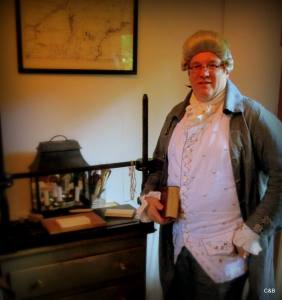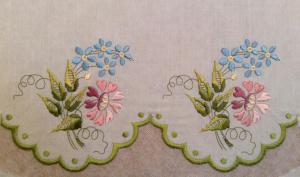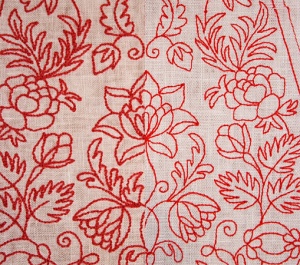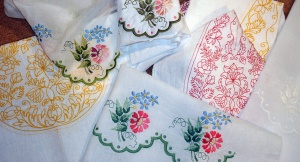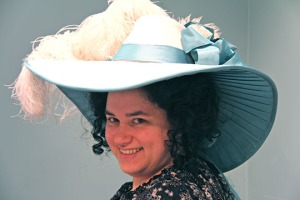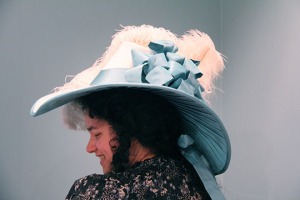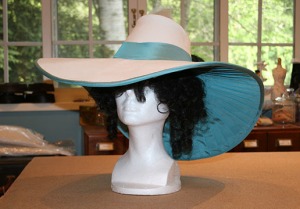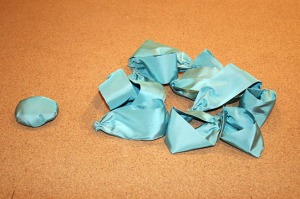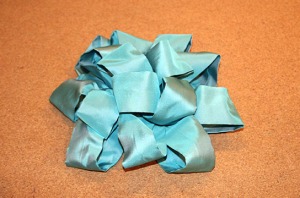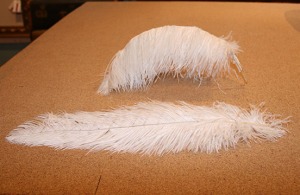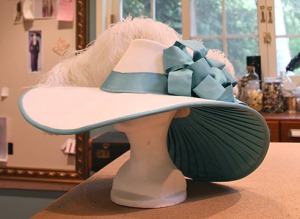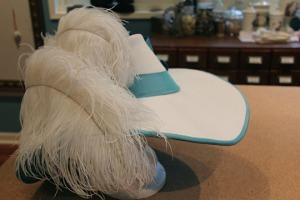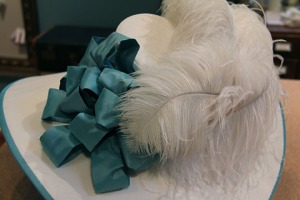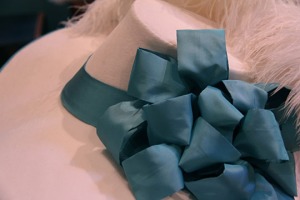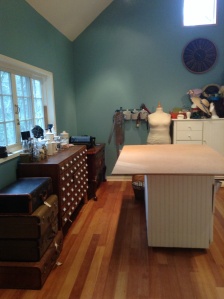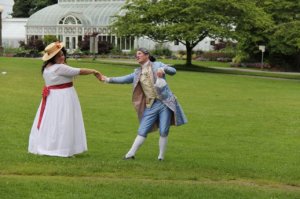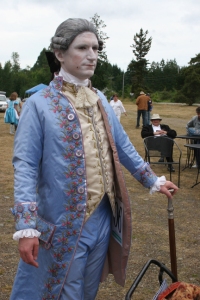I locked myself out of the sewing studio for a few days, which meant no sewing at all aside from some hand-sewing I had in the house. I finally had more keys made and a long weekend home alone, so I designated it an all-sewing weekend, and invited over a couple of friends.
My plan was to finish the black silk petticoat and get started on the Victorian outfit I plan to wear for croquet next month. I had new patterns and thread and other goodies just waiting to be used.
The petticoat was supposed to be a quick and easy project. A simple pattern, a few ruffles, some lace, and done. The ruffles set me back for a while, but I was finally past that. All that it needed was the last of the lace sewn on, and for the finished yoke to be sewn to the finished ruffle. One seam. Easy, right?
Not so much. The seam did go together and was neatly finished, and I had a finished petticoat. I went to try it on and was horribly disappointed. It was short. Inches too short. Also, it was all out of proportion and just looked awkward and unflattering. Uh-oh. How did such a simple project turn out so wrong?
First, the length issues are all me. I was matching the length to an existing petticoat, the one I wore for my wedding. The two petticoats were exactly the same length, so it wasn’t an error in patterning. After trying on both of them, I realized the wedding petticoat is just as short, and I had never noticed. The drawstring waistline and weight of the ruffles mean it rides lower than my actual waistline, no matter how firmly I tie it, and the train means that length is only an issue at the very front. The fabric is a soft, thin taffeta, whereas the black silk is very crisp, so each petticoat also hangs very differently. So while I perfectly matched the length I was aiming for, I really needed to add about 4″ to the black silk.
After discussing it with my sewing buddy, I considered taking out 2 of the 5 tucks, gaining a quick 2″ of length with minimal effort. However, that meant talking about the real problem with this petticoat: the proportions.
The pattern illustration shows a deep ruffle with a narrow band of small tucks along the bottom edge, with a narrower ruffle below that. The tucks take up maybe 1/5, or less, of the space on the deep ruffle, and the narrow ruffle appears to be about 1/2 the depth of the deep one. It’s adorable.
The actual pattern creates a deep ruffle with 5 widely-spaced 1/2″ wide tucks at the bottom edge, which take up a significantly larger portion of the ruffle. I was also expecting pintucks or 1/4″ wide tucks from the illustration, so they are much wider and much more widely spaced than I was expecting. The narrow ruffle is also only 1/4-1/3 the depth of the deep ruffle, so those proportions look very different, as well. I went with it because I didn’t want to recalculate the length and re-mark the lines and cut new fabric, and maybe it would look fine when it was done.
It’s “just” a petticoat, it was going to be lacy and ruffled like I wanted, so I tried not to be bothered by the difference between the illustration (and my vision) and reality. Once it was together and on me, it was too obvious to ignore – it was frumpy and unflattering, and that wide ruffle was out of proportion to everything else. It really needed to be shorter, and taking out tucks would only make it deeper. So much for an easy fix.
So what was left to do but take scissors to all of it? OK, not all of it, but at least to the ruffle. Since it needed to be shorter and the yoke needed to be longer, cutting it off the existing yoke seemed the fastest way to making progress again. But taking scissors to a pile of silk that is perfectly finished and 98% complete is sheer torture.
So now the deep ruffle is shorter by a couple inches, and the yoke is longer by quite a few inches, and everything is ready to sew together again. Is it still progress if you end up back where you started?
I hope to finish the petticoat today, barring any other major issues. In the meantime, I did make some other progress this week:
- The early 1900’s princess slip has been washed to remove all the stabilizer, and is ready for a final pressing and some ribbon. I’m really pleased with how it turned out.
- Ditto for the silk corset cover that coordinates with the wedding petticoat.
- The Armistice blouse was almost finished, but the sleeves I cut out (how many years ago?) were not anywhere close to the right size for me. I think the style is meant to be a little long, but these are just too long, and too full, and very unflattering. Luckily, I have more of the cotton lawn I used, so I just need to cut out new sleeves and then finish the hem and buttonholes. I don’t love this blouse on me, but it is very sweet and dainty and has so much work and lace in it that I really feel I should finish it and try wearing it.
- The blue silk men’s court suit had sleeve issues, so we tackled that problem this weekend. Lots of patterning later, we have a sleeve with an actual sleeve cap! Imagine that. Some careful cutting and piecing of the old sleeves should make it just barely possible to cut the new sleeves from the same fabric, since there is absolutely nothing left of that silk. I still don’t know where we went wrong originally, but I’ll be so glad when I can finally call that project complete.
- I spent a fair amount of time washing and measuring the cotton print I hoped to use for my new Victorian outfit, and was totally in love with the pink-and-green dress I had in mind. Unfortunately, it turns out I can’t use the fabric after all, so I had to dig through my stash and see what else might work. For now, it looks like some dusty rose linen for a skirt, and leftover Regency gown printed cotton for the blouse. It’s very different than what I wanted, but it will be pretty and slowly I am coming around to the change. I still need/want a pink and green dress, so I guess I’m on the lookout for new fabric.

